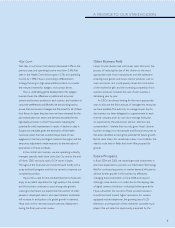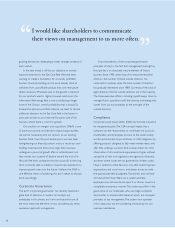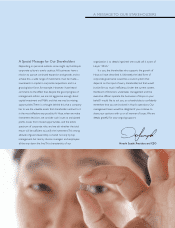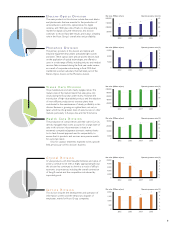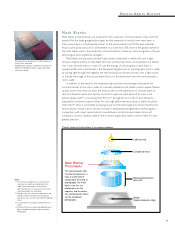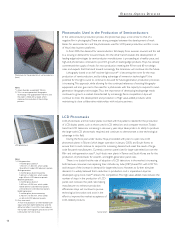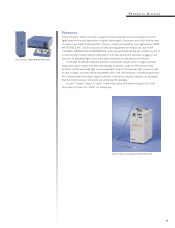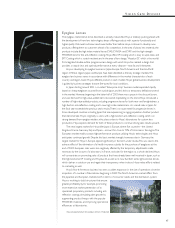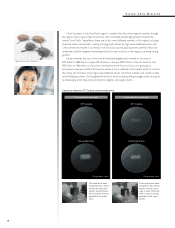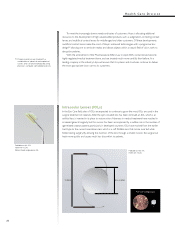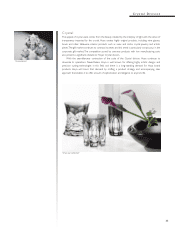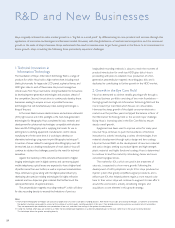Pentax 2005 Annual Report Download - page 16
Download and view the complete annual report
Please find page 16 of the 2005 Pentax annual report below. You can navigate through the pages in the report by either clicking on the pages listed below, or by using the keyword search tool below to find specific information within the annual report.
Optical Lenses
As one of the few manufacturers with a fully integrated production process for products from
glass materials to optical lenses, Hoya was able to embark on the development of aspherical
glass molded lenses from early on, and to contribute to the development of today’s high-
performance optical equipment, particularly video cameras and digital cameras. Aspherical lenses
are able to perform superb correction for spherical aberration. Thanks to this feature, shorter
focusing distances are possible, and the number of lens elements can be reduced. And this has
made cameras much smaller and lighter.
Currently about 60% of Hoya’s sales of optical lenses are for digital cameras, 20% for digital
video cameras, and the remainder for projectors and copiers and others. There are a large
number of manufacturers with digital cameras on the market, and wherever glass lenses are used
in those products, Hoya has a strong share of the market.
For several years, demand for digital cameras had been growing consistently, but after the
summer of 2004, it became clear that production was being scaled back in the digital camera
market, and in the second half of the year the trend toward slower sales became more
pronounced. Hoya’s results were affected in proportion to the slowdown in digital camera
shipments. Despite the temporary dip in demand, Hoya opened a new optical lens plant in
Suzhou, China in August 2004. The plant is expected to take advantage of the reduced cost of
overseas production, and will produce lenses for camera-equipped mobile telephones, demand
for which is expected to increase in the near future. For now, most of the lenses used in camera-
equipped mobile telephones are made of plastic, but as the resolution of these cameras begins
to exceed two to three megapixels, Hoya predicts that the need will grow for its lightweight
aspherical glass lenses, with their excellent ability to correct spherical aberration. Additionally,
growth in demand is anticipated for rear projection televisions, a third type of large, flat television
following LCD and plasma versions. For these televisions to be able to offer high-definition
television (HDTV) quality, the projection lenses will require a special type of high-quality glass. In
this field too, Hoya is already in position to leverage its technologies, and will be actively
allocating the necessary resources to this field.
Electro-Optics Division
Feature of aspherical molding lens
Aspherical molding lens that enables
manufacturing high-precision lens without
polishing process. Because the aberration
(distortion) decreases compared with the
spherical lens, the miniaturization and degree
of freedom of the design of the product have
been improved since it reduced the number of
lenses used.
Comparison between aspherical and spherical glass lenses
(Aspherical lens)
(Spherical lens)
Optical lenses
Aspherical glass lenses
Light axis
Focal plane
Light axis
Focal plane



